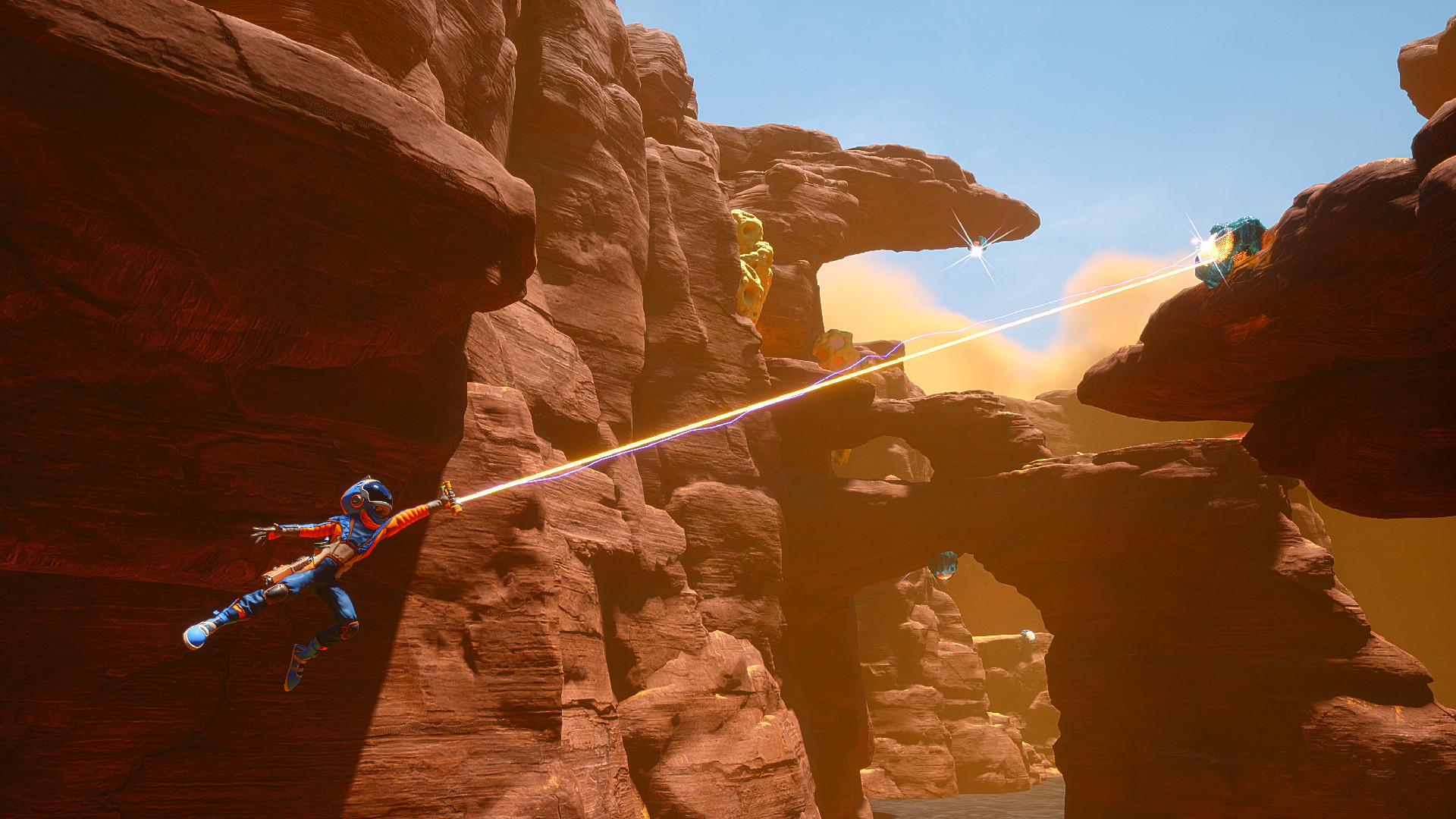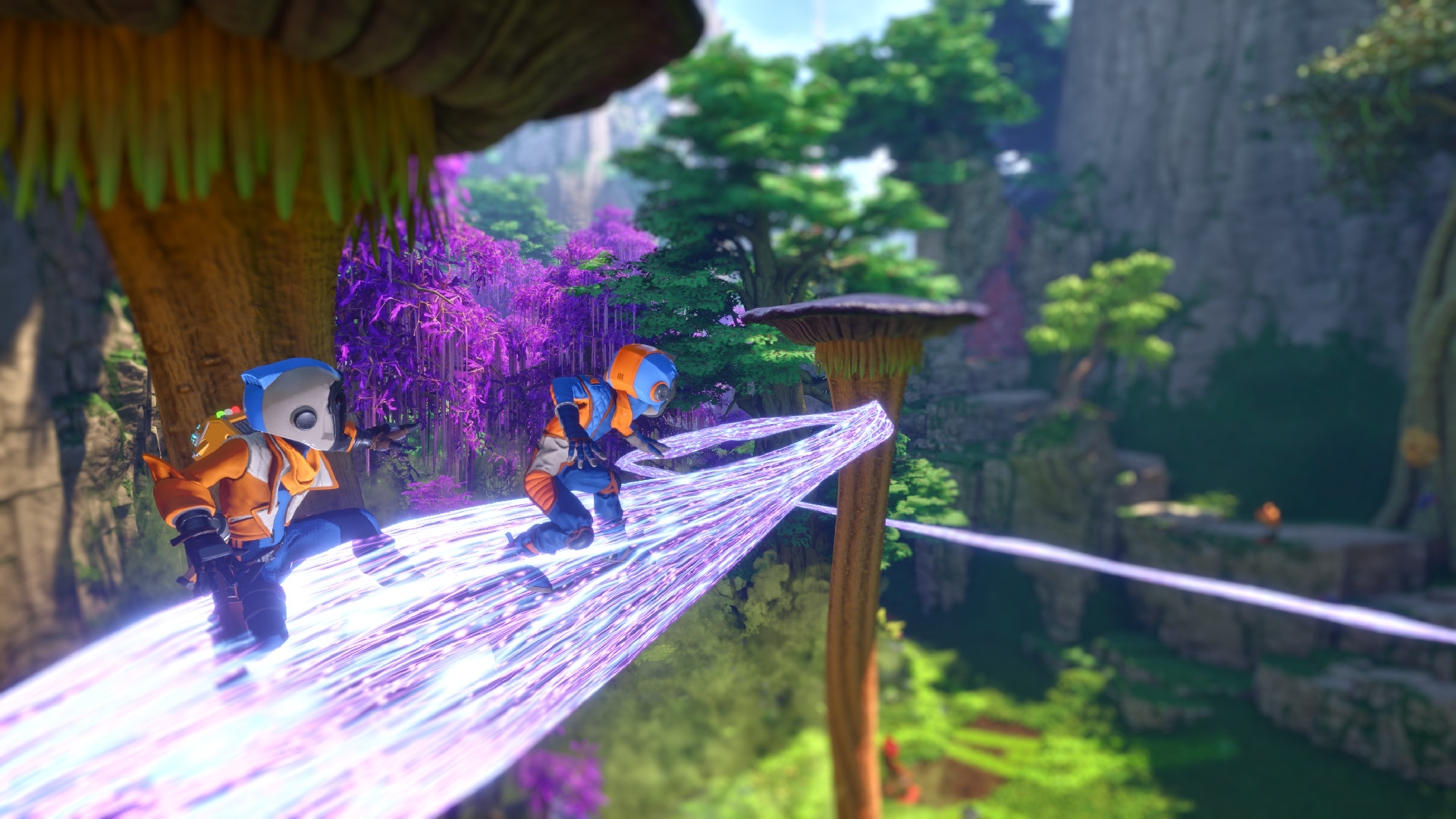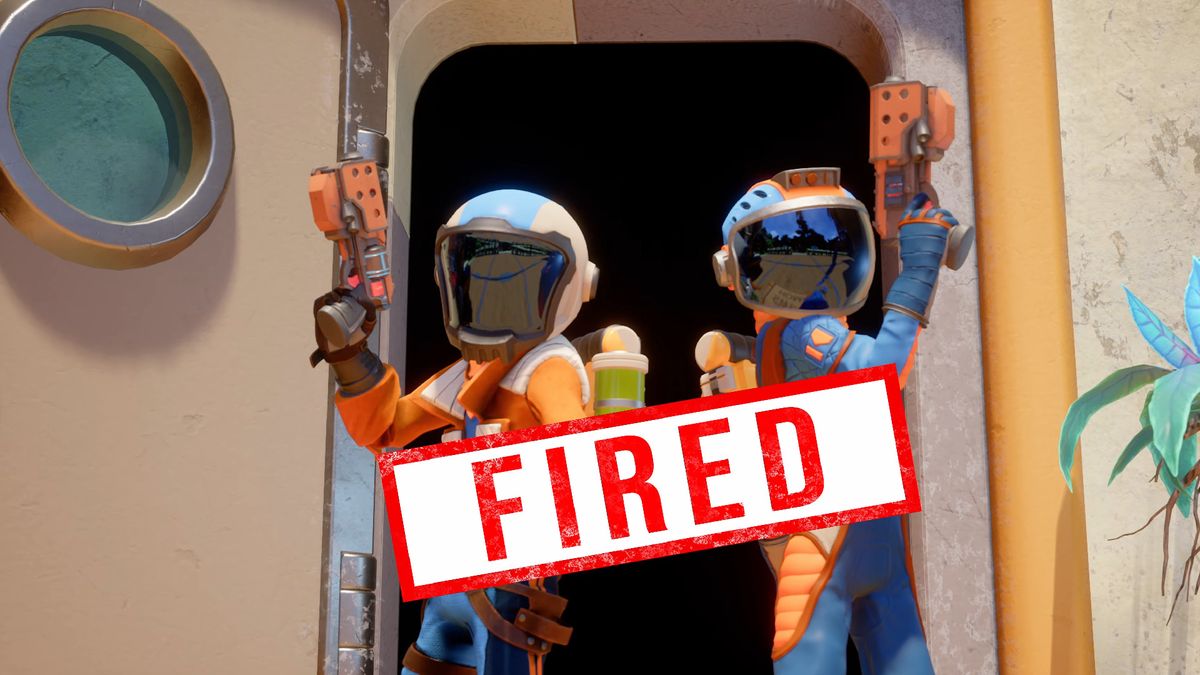The original Journey to the Savage Planet spent much of its runtime satirizing corporate overreach, which makes the ultimate fate of developer Typhoon Studios more than a little ironic. It was, after all, one of the initial acquisitions Google made to build content under the Stadia banner – and one of the studios to be unceremoniously closed once the massive corporation decided to shut down the entire Stadia initiative it had invested so much money in.
Despite what could have been a tragic end for the studio, the devs managed to pick themselves up, reacquire the rights to Savage Planet, and reform under the new name of Raccoon Logic. They’ve now lifted the veil on their next project: a sequel called Revenge of the Savage Planet, where the terrible little corporation from the original Metroidvania adventure has been acquired by a much bigger, much worse business that’s sent you off on a 100-year cryosleep journey to chart distant worlds. You awaken on a new planet completely alone, but you have been given a message from your intergalactic HR department – two decades into your century-long nap, you were laid off. Good luck going solo on this uncharted alien planet!
During a tour of the Raccoon Logic studio in Montreal, the devs emphasized a few times that the corporate entities in this universe are quite “legally distinct” from any of their own past employers. But it’s tough not to see years of frustration with big-scale game development pouring out in Revenge of the Savage Planet. No padded playtime, no games-as-a-service hooks, just a straight-up solo (or co-op) adventure that you can play through to a definitive ending.
Per my last email
Revenge of the Savage Planet abandons the original game’s first-person perspective in favor of a third-person camera, but it’s still a 3D action-adventure game with Metroidvania-style progression, where you collect and craft upgrades that let you make it past the various obstacles in your way. But this time around, the devs have tried to offer more dynamic game systems to create some emergent chaos.
There are, for example, slime monsters who’ll leave big trails of ooze wherever they go. You can slip on that ooze and so can other creatures, turning big fights into ridiculous skating sessions. You can also set the slime on fire, which has its own combat applications. The devs say they wanted to de-emphasize guns here, and while you can still very much shoot aggressive monsters, you’re going to be encouraged to find more creative ways to deal with problems.
You might also not want to kill monsters at all, since you can capture them. It looks a bit like fishing by way of Metal Gear Solid 5’s Fulton recovery system – the wormhole version, specifically – and the creatures you collect can sometimes unlock new upgrades. They’ll also populate your home base, which is another new addition in this sequel. The base is customizable and upgradable, and seeing it grow should offer a nice sense of progression over the course of the game.
More like savage planet…s

These are just lists of features, though, and I’ve only seen a relatively brief, hands-off demo of Revenge of the Savage Planet, so I don’t know how they’ll all feel when they’re working together in concert. But it’s clear that the devs are doing everything they can to make this sequel bigger, broader, and deeper than the previous game.
The planets are more open-ended this time around, as rather than going down linear paths and finding dead ends there, you’ll instead be able to poke and prod at far more varied ways of moving forward – it’s like an ever expanding circle of explorable space. You’ll always have an objective marker pointing you toward your next big goal – and, in a major upgrade from the original game, you’ll also have a map – but you’re going to be strongly encouraged to explore every possible nook and cranny. The devs compared it to an N64-era Rare platformer, where the joy of the game is in exploring the world and finding all the hidden collectibles.
While Raccoon Logic is trying to avoid padding in Revenge of the Savage Planet – noting that uber-lengthy games can often feel like ‘infinite porridge’ – it’s clear that this sequel is a much bigger, more expansive game than the original, as the devs reckon it’ll take around 30 hours to explore its five planets and beat the story. (By contrast, the original featured only one planet and took about 10 hours to complete.)

The sequel is being developed with a much larger budget, and it shows with how much more expansive and detailed the locations all appear. In contrast to the discrete zones of the first game, each planet has a fully contiguous map to explore, so while these aren’t full open-worlds you’ll have a lot more opportunity to see something neat in the distance and try to forge a path there.
All the charmingly goofy humor is still in place here, from the Looney Tunes-level violence you inflict on the local wildlife to the occasionally grim corporate satire that hangs over everything. Then there are, you know, baboons with butts for faces – creatures that apparently had to be excised from the cover art thanks to ESRB restrictions. And most importantly – to me at least – the live-action FMV is back in full force, so look forward to a whole lot of utterly disgusting and extremely entertaining commercials.
For all the tribulations the devs have gone through over the past few years, Revenge of the Savage Planet doesn’t wear any of that burden – except, of course, the part where its story seems to be directly informed by those struggles. This looks like a confident follow-up to the solid foundations of the original, expanding its ideas into a game with much broader scope and bigger production values. Everything I’ve seen has left me very impressed, and if the game feels as good to play as it looks in a hands-off demo, this could be a breakout for a dev team that’s been working to prove itself for years.
Check out all the best Metroidvania games you can play today, and don’t miss any of the most notable upcoming indie games for 2024 and beyond.

